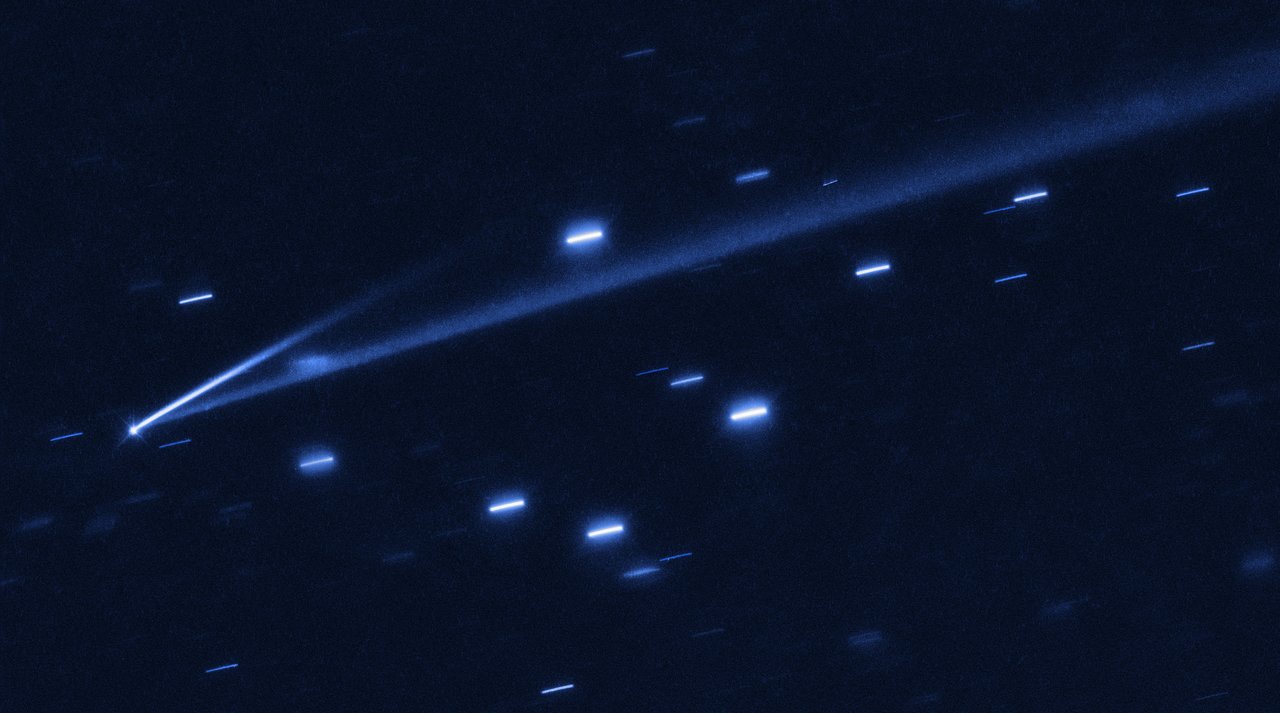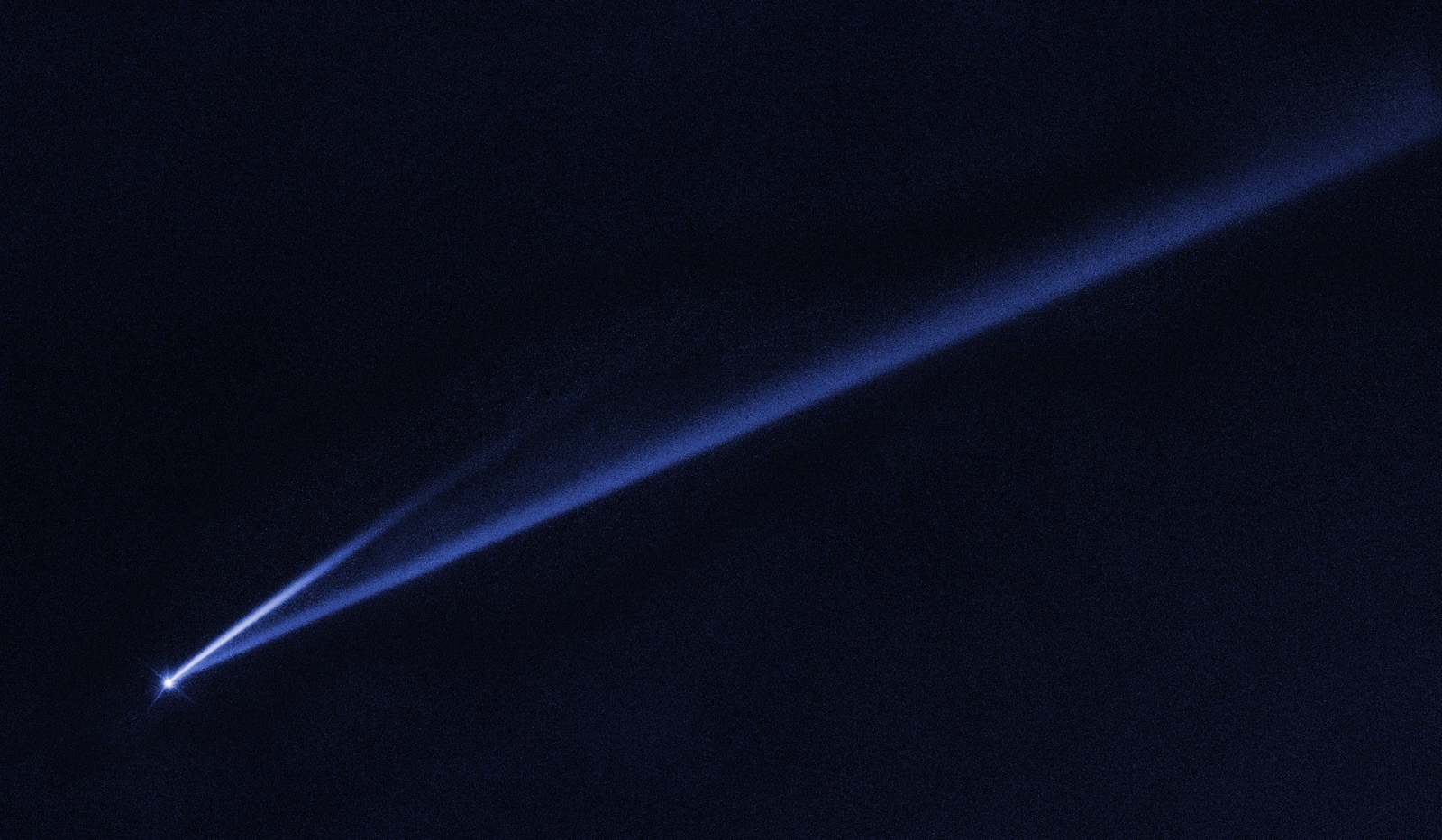Rare Disintegrating Asteroid Spied by Hubble Telescope (Photo)
This is what it looks like when an asteroid starts to fall apart.
Two long, narrow tails of material are streaming from (6478) Gault, a 2.5-mile-wide (4 kilometers) rock in the main asteroid belt between Mars and Jupiter, a new study reports.
Gault completes one rotation every 2 hours — so fast that the asteroid is flinging material off its surface into space, study team members said.
Related: The Greatest Asteroid Encounters of All Time!
"This self-destruction event is rare," co-author Olivier Hainaut, of the European Southern Observatory in Garching, Germany, said in a statement. "Active and unstable asteroids such as Gault are just now being detected because of new survey telescopes that scan the entire sky, which means asteroids that are misbehaving such as Gault cannot escape detection anymore."
Hainaut and his colleagues, led by Jan Kleyna from the University of Hawaii, studied Gault using NASA's Hubble Space Telescope and a variety of ground-based instruments in Hawaii, Spain and India. These observations revealed the two debris tails and allowed the team to understand how they were produced.
One tail is about 500,000 miles (800,000 km) long by 3,000 miles (4,800 km) wide, the researchers said. The other tail spans about 125,000 miles (200,000 km) in its longest direction. The tails' constituent particles are being pushed toward the outer solar system by sunlight.
Breaking space news, the latest updates on rocket launches, skywatching events and more!

The debris streams were apparently generated by two separate dust releases, which occurred around Oct. 28 and Dec. 30 of last year, study team members said. Each release likely lasted between a few hours and several days.
These dust puffs were caused, ultimately, by Gault's superfast spin rate, which the researchers nailed down in the new study. The asteroid is a relatively loose collection of rock and dirt known as a rubble pile; such conglomerations start to come apart when their rotational period hits the 2-hour mark.
"Gault is the best 'smoking-gun' example of a fast rotator right at the 2-hour limit," Kleyna said in the same statement. "It could have been on the brink of instability for 10 million years. Even a tiny disturbance, like a small impact from a pebble, might have triggered the recent outbursts."
Kleyna and his colleagues think they know how Gault got spun up: The asteroid has been re-radiating solar energy as heat in an asymmetric fashion for eons. This generates a tiny torque that has caused Gault to rotate about 1 second faster every 10,000 years.
This process, known as the Yarkovsky-O'Keefe-Radzievskii-Paddack (YORP) effect, is also likely behind the spin-up of Bennu, the near-Earth asteroid that NASA's OSIRIS-REx spacecraft is studying up close.
Bennu is also an active asteroid, the OSIRIS-REx team announced last week. The probe has observed a dozen particle-ejection events since it arrived in orbit around the 1,650-foot-wide (500 m) space rock on Dec. 31, 2018.
The new study has been accepted for publication in The Astrophysical Journal Letters.
- Asteroid Basics: A Space Rock Quiz
- Hubble in Pictures: Astronomers' Top Picks (Photos)
- OSIRIS-REx: NASA's Asteroid-Sampling Mission in Pictures
Mike Wall's book about the search for alien life, "Out There" (Grand Central Publishing, 2018; illustrated by Karl Tate), is out now. Follow him on Twitter @michaeldwall. Follow us on Twitter @Spacedotcom or Facebook.

Michael Wall is a Senior Space Writer with Space.com and joined the team in 2010. He primarily covers exoplanets, spaceflight and military space, but has been known to dabble in the space art beat. His book about the search for alien life, "Out There," was published on Nov. 13, 2018. Before becoming a science writer, Michael worked as a herpetologist and wildlife biologist. He has a Ph.D. in evolutionary biology from the University of Sydney, Australia, a bachelor's degree from the University of Arizona, and a graduate certificate in science writing from the University of California, Santa Cruz. To find out what his latest project is, you can follow Michael on Twitter.

